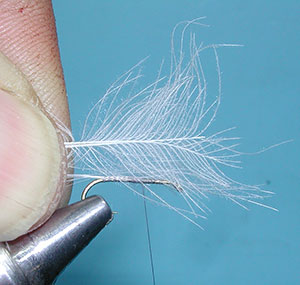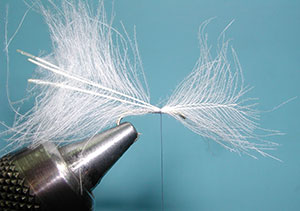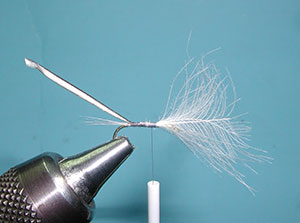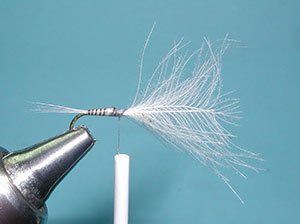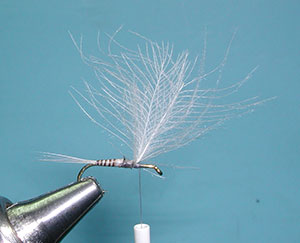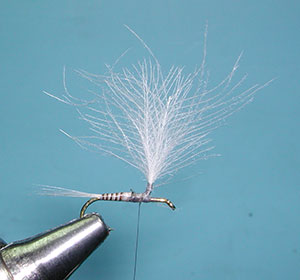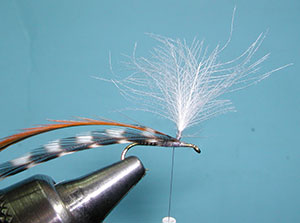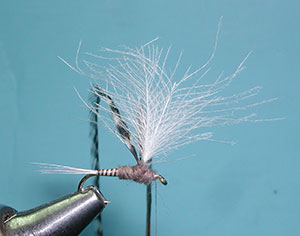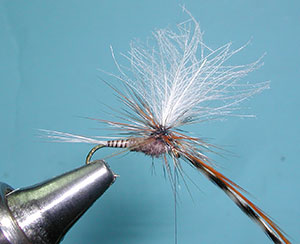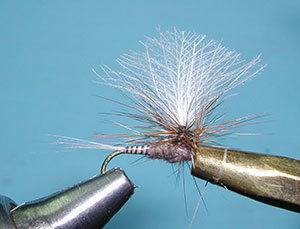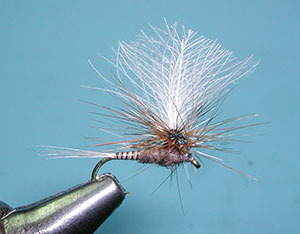Biot Body Parachute Dun – one side of the quill
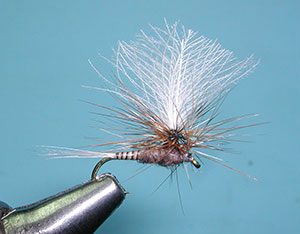
CDC Biot Parachute, Adams
Tying Instructions
| Materials
to Order Material, click the link |
|
|---|---|
| Hook | TMC 100 #16-22 |
| Thread | Veevus 14/0 Gray |
| Body | Goose Biot, Natural Gray |
| Thorax | Superfine Adams Gray dubbing |
| Tail | Coq de Leon, Medium Dun |
| Wingpost | CDC Feathers, White |
| Hackle | Brown and Grizzly Saddle Hackles |
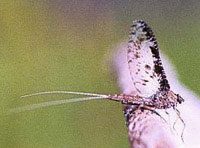
Biot Body Parachute Dun
The Biot Body Parachute Dun utilizes biots in it’s construction. Biots are the stiff barbs found along the leading edge of a primary flight feather. They are necessary to give birds flight. There are only two birds that fly tiers utilize biots, Turkeys and Geese. The goose biots are shorter and wider than turkey and are often used for tails on stoneflies and wingbuds. For bodies, Goose biots can be used on Mayfly patterns in the #16-20 sizes. Turkey biots are much longer and often will be a good choice for mayfly patterns in sizes 10 to 14.
For patterns smaller than #14, Turkey biots are too large and other materials such as stripped quills will work better. Turkey Biot Quills are sold as entire feathers and the “lift” side of the feather can be used for bodies but the barb is softer and thinner than the biot side. These barbs are suitable for use on sizes #16-22 but protect them with a layer of glue such as Zap-a-gap or Loons Clear Finish.
Two ways to wrap
Depending on how the biot is wrapped, you can get either a ribbed appearance or a smooth one. Peel the biot from quill. At the base of the biot is a notch or indentation. Attaching the biot to the hook shank, if the notch faces downward the body will be smooth, if it faces upward, the body will have a series of fringed barbules. The smooth body will require that you overlap the biot somewhat to hide the leading fringe side. Remember to keep your biots damp when in use as this will keep them from splitting, just like quills.
Fly Tiers
A number of fly tyers are known for their use of biot bodies. A.K. Best preferred Turkey Biots for most of his mayflies that were #10-14 but preferred stripped quills for smaller mayflies. Rene Harrop utilizes Turkey Biots for many of of his mayfly duns down to a size 22. Rene will often use CDC as a wingpost. And, the late Shane Stalcup, was also fond of using goose biots with a CDC hackle.
Variations
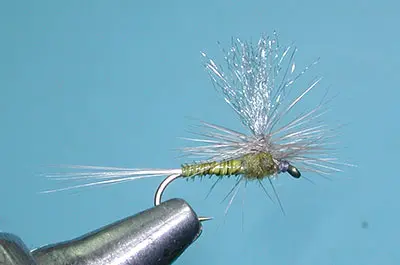
Parabiot BWO
| Hook | TMC 100, sizes 12-18 |
| Thread | Veevus 14/0 Gray |
| Body | Olive Turkey Biot |
| Thorax | Olive Superfine |
| Tail | Medium Dun Hackle Fibers |
| Wingpost | Zlon Dun |
| Hackle | Medium Dun Saddle |
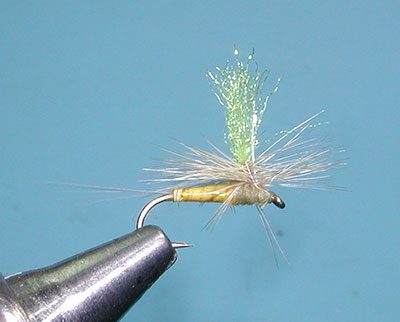
Parabiot Sulphur
| Hook | Tiemco 100 #14-18 |
| Thread | Veevus 10/0 Light Cahill |
| Body | Turkey Biot Orange |
| Thorax | Pale Yellow Superfine Dubbing |
| Tail | Light Dun Microfibbets |
| Wingpost | Fl Chartreuse Antron Yarn |
| Hackle | Light Ginger Hackle |
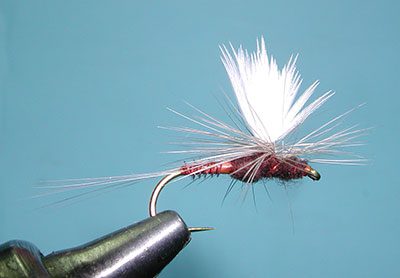
Parachute Dun, Mahogany
| Hook | Tiemco 100 #12-14 |
| Thread | Uni-thread 8/0 Rusty Brown |
| Body | Mahogany Turkey Biot |
| Thorax | Mahogany Brown Superfine |
| Tail | Dun Spade Hackles |
| Wingpost | White Turkey Flat |
| Hackle | Dun |
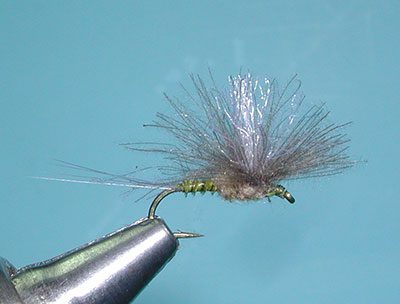
CDC Parachute Dun, Olive
| Hook | TMC 100, sizes 12-16 |
| Thread | Uni-thread 8/0 Olive |
| Body | Turkey Biot, Olive Dun |
| Thorax | Superfine, callibaetis |
| Tail | Dark Dun Mayfly Tails |
| Wingpost | White Poly Yarn |
| Hackle | Dark Dun CDC |



